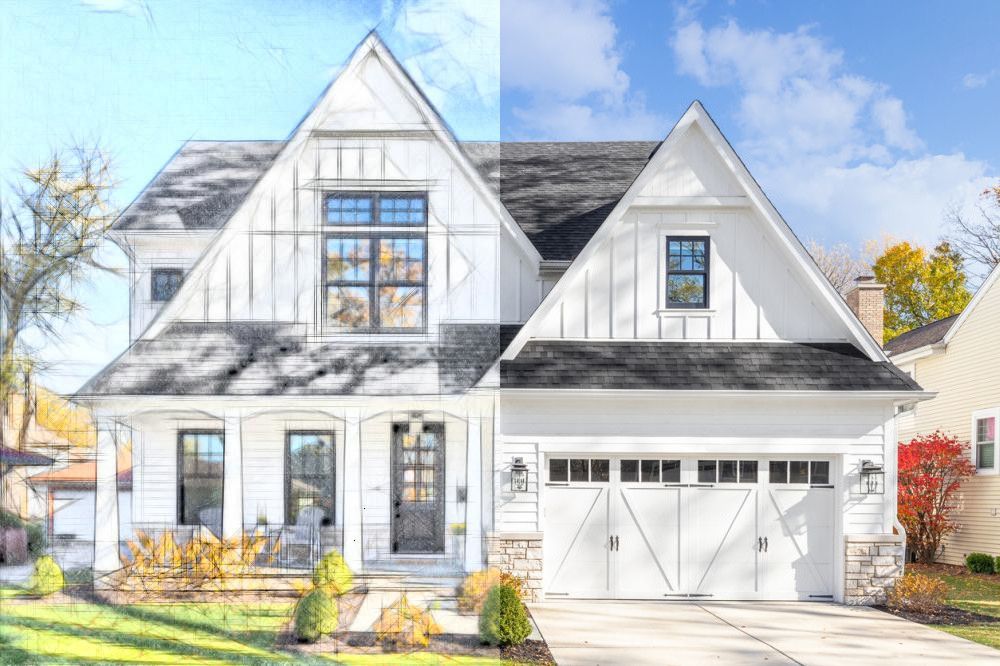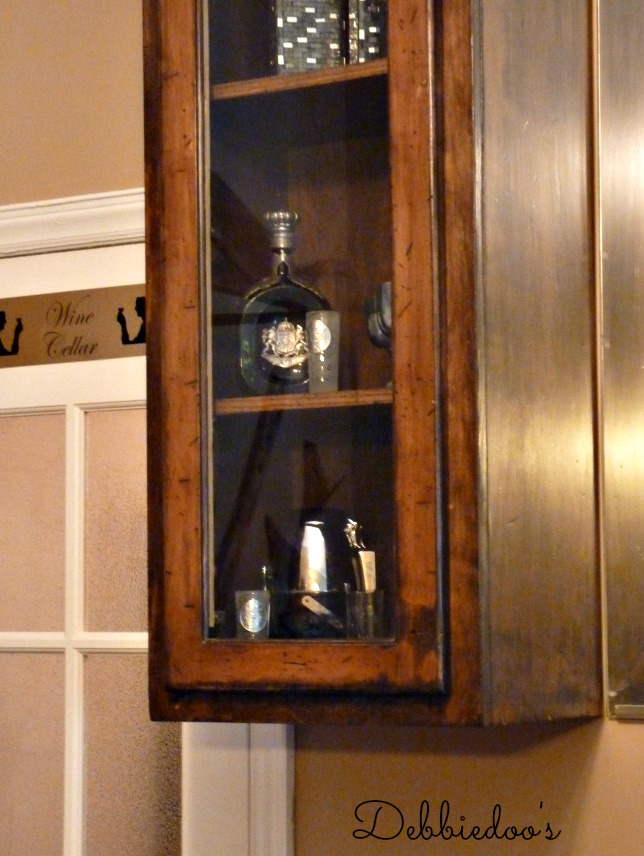Old farmhouses possess a unique charm and character that many homeowners find irresistible. These historical buildings have often stood the test of time, becoming symbols of our rural heritage. However, updating an old farmhouse can be challenging and rewarding. This comprehensive guide explores the steps to remodeling an old farmhouse while preserving its inherent beauty and heritage.

1. Assessing the current state of your farmhouse
Before beginning any remodeling project, it’s crucial to assess the current state of your farmhouse. Start by inspecting the structural integrity of foundations, walls, roofs, and support beams to identify any potential issues. Check for hazardous materials, such as asbestos and lead paint that may need professional removal. Assess the existing electrical and plumbing systems for safety and efficiency, and evaluate the home’s overall energy efficiency.
2. Planning your farmhouse remodel
To ensure a successful remodel, begin by determining your goals and priorities for the space. Create a budget that includes both the cost of materials and labor. Consider hiring a design team or architect experienced in historic renovations to help bring your vision to life. Lastly, obtain any necessary permits and approvals from local authorities to ensure building codes and regulations compliance.
Angie: When we bought our old farmhouse several years ago, every room was stuck in the 1970s and desperately needed remodeling. We were working with a very tight budget.
3. Key elements of farmhouse design
When remodeling an old farmhouse, it’s essential to balance preserving original features with incorporating modern amenities. Focus on retaining architectural elements such as exposed beams, original woodwork, and brick or stone fireplaces. Choose materials and finishes that complement the home’s history while incorporating modern conveniences like updated appliances and energy-efficient systems. Don’t forget to consider landscaping and outdoor spaces, which can greatly enhance the overall appeal of your farmhouse.
4. Remodeling tips for each room
Each room in your farmhouse presents unique opportunities for blending old and new features.
Kitchen
Update appliances and fixtures with energy-efficient models that complement the home’s aesthetic. Add functional storage solutions and consider a farmhouse sink as a focal point to create an inviting, rustic ambiance.

Angie: Our biggest expense was installing two new windows, but we finished the rest of the remodel very inexpensively by repurposing salvaged things. We used salvaged wood to make open shelves, added a pantry where there had previously been a shower stall behind the wall, and added antique ceiling tiles to the front of the cabinets and repainted them rather than replacing the cabinets. We stripped four layers of linoleum off the floor to discover a wood floor underneath, which we refinished. Doing all the work ourselves saved us a small fortune. Check out the entire remodeled farmhouse kitchen at Knick of Time.

Living room
Highlight exposed beams and brickwork, and add built-in shelving for a seamless blend of old and new. Incorporate cozy seating arrangements to create a welcoming space for family and friends.
Bedrooms
Maximize natural light and select restful color palettes to create calming retreats. Incorporate reclaimed materials, such as repurposed wood flooring or vintage furniture, to add character and charm.
Bathrooms
Modernize fixtures, emphasize rustic details, and choose durable, easy-to-clean surfaces for a comfortable and functional space.
Angie: Once the kitchen was finished, we moved on to the only bathroom in our home at the time. Here’s how it looked when we moved in. It was really awful!

Angie: To remodel it, we installed salvaged wood on the walls and repurposed an antique cabinet into a vanity. We used brown paper as the flooring, which still looks good after over three years. Check out the entire remodeled farmhouse bathroom at Knick of Time.

Angie: A year or so later, I repainted the walls and changed up the decor a bit. It really brightened up the room, and gave it more of the farmhouse look I was going for in our house. Check out the entire new remodel of the farmhouse bathroom at Knick of Time.

Angie: Then last year, I decided to repaint the antique cabinet we used as a vanity and replace the faucet, which you can see at Knick of Time.

Mudrooms and entryways
These spaces serve as a buffer between the outdoors and your home, providing storage for coats, shoes, and outdoor gear. Incorporate built-in benches, cubbies, or hooks to maximize storage, and select durable flooring materials that can withstand the wear and tear of daily use.
Angie: Our most recently remodeled space is our entryway, which looked like this when we moved in – very drab with dark paneling.

Angie: I did a quickie makeover when we first moved in by decoupaging dictionary pages on the walls, which only cost about $20. Check out the first part and second part of the farmhouse entryway makeover at Knick of Time.


Angie: This year, I decided the entryway needed a full remodel so that the look flowed better with the kitchen, so we planked the walls with pallet wood, added a sliding barn door between the entryway and kitchen, then decorated it farmhouse-style. Check out the full remodeled farmhouse entryway at Knick of Time.

Laundry and utility rooms
Upgrade outdated laundry and utility rooms with energy-efficient appliances and add functional storage solutions like cabinetry and countertops. Consider incorporating a sink for added convenience and choose materials that are easy to clean and maintain. It is also possible to convert a laundry room into an extra bathroom.
Angie: We turned half of our laundry room into a second bathroom with a shower. Here’s how it looked before.

Angie: After adding a dividing wall, we turned an old desk into a vanity, and turned an antique receipt register into a towel holder. Since this bathroom is mainly used by the guys in my family, I decorated like an old barber shop. Check out the full remodeling of the secondary bathroom at Knick of Time.

Home office
Transform unused spaces or smaller rooms into a dedicated home office. Use built-in shelves or desks to maximize space and add ample lighting for a comfortable work environment. Select a calming color palette and incorporate elements that reflect the farmhouse’s character, such as rustic wood accents.
Attic and basement
Attics and basements offer valuable square footage that can be converted into additional living spaces, such as guest rooms, playrooms, or home theaters. Ensure proper insulation, ventilation, and moisture control before beginning the renovation. Preserve exposed beams, brick, or stone walls for added character, and use strategically placed lighting to create a cozy atmosphere.
Outbuildings and barns
Farmhouses often have outbuildings or barns that can be repurposed for various uses, such as workshops, studios, or guest accommodations. Assess the structural integrity of these buildings and make necessary repairs or reinforcements. Retain original features like exposed beams, sliding barn doors, or weathered wood siding, and incorporate modern amenities like insulation, plumbing, and electrical systems to create functional, inviting spaces.
Angie: We had a really old shed a few steps away from our back door and converted it into a guest room. Here’s how the shed looked before we started. It had plants growing through the rafters, and wasps had made it their home.

Angie: We added plank boards and corrugated metal on the walls. The room didn’t have any windows before the remodel, so we made an opening in one wall and installed two antique windows that I’d be given from demolished old homes.

Angie: I purchased a bunch of the corrugated metal for $20 from a farmer who had removed it from a barn, and we used inexpensive pine boards for the planked walls, which kept the costs of the remodel low. Decorating it with auctions finds, like an old ladder and wooden table was so much fun.

5. Energy efficiency and sustainability
Enhance your farmhouse’s energy efficiency by installing energy-efficient windows and doors, upgrading insulation, and implementing renewable energy systems like solar panels or geothermal heating. Use reclaimed and recycled materials whenever possible to minimize environmental impact and maintain the home’s authenticity.
6. Navigating challenges and common issues
Remodeling an old farmhouse often presents unique challenges. Work with uneven floors and walls by using creative solutions like built-in furniture or custom cabinetry. Address limited space with innovative storage and design strategies. Most importantly, always keep the home’s historical character in mind, making decisions that preserve its heritage and charm.
Thanks to Angie from Knick of Time for the stunning farmhouse remodeling ideas! Check out more featured home tours.


Glad I stopped by! What charming ideas Angie!!
Big Texas Hugs,
Susan and Bentley
Hi there Angie, glad you are sharing your farm house make over. I grew up in a beautiful big farmhouse; loved
it so much. It truly felt like a ‘home’. Yours is decorated with all the things I love.
Thanks so much for letting me fill in and guest post today, Debbie – It was great fun!
Loved this post! I clicked over to your blog hoping to follow you by email, I couldn’t find anywhere to do that. Did I just not see if? Great blog content! Very inspired!
My sign up is on my sidebar and if you are on mobile you should see the RSS option in the share buttons. Thanks.
Absolutely Beautiful
You are so gifted!
Looks so warm and inviting! !!
Very inspiring makeovers. I noticed the Vaughan sign over the window. My grandmother was a Vaughan. Love your farmhouse!
What a most beautiful transformation!
Wow Angie, the transformations on these are definitely beautiful. It goes to show what a little thought and creativity can do. It’s awesome when you have an eye for makeovers, not exactly my thing, I leave that up to my creative husband who definitely can see things I can’t.
Love the candle holder, the last picture, again amazing what a little imagination can do 🙂
Thanks,
Elizabeth
Wow! This posting is so inspiring! I have got to save this to refer back to – you give so many great ideas! Thank you!
Wow this is amazing. We are eyeing a drab old farmhouse and this gives me hope!!! What was the cost of each room? (We’d need to pay for labor for most of it, but I love your quick fixes like newspaper!). I’ll take a look at your blog.
I just inherited a large farm house. I want to fix it up but my budget is very small. First of all I must exterminate the bats in the attic and rewire–very expensive. If you have any suggestions I am welcome to hearing them.